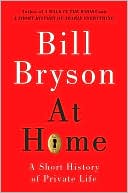Golden Donors: A New Anatomy of the Great Foundations
The world of the golden donors-the rich and influential philanthropic foundations-is quite likely the least known and yet most pervasive of all the invisible money and power networks in America. Nielsen explores the 36 largest of the 22,000 currently active foundations. He takes the reader inside each of the giants to analyze its people, policies, and performance. From the most famous, Ford and MacArthur, to the most obscure, Mabee and Moody, the author lets in daylight and lets out the bats...
Search in google:
Nielsen is a counselor on philanthropy policy, and has advised such clients as John D. Rockefeller III, J. Paul Getty, and Robert O. Anderson, as well as major corporations and foundations. This text is a reprint of the volume originally published in 1985 by Truman Talley Books/E. P. Dutton, in which Nielsen examined 36 of the largest 22,000 active philanthropic foundations of the mid-1980s. The new edition contains the original text, with a brief, new introduction by the author in which he notes that profound changes have occurred in the past years, and encourages "critics and scholars younger than I" to conduct the research and study necessary "to write the new books that will illuminate this most remarkable American phenomenon: institutional philanthropy." Annotation c. Book News, Inc., Portland, OR (booknews.com) Publishers Weekly Nielsen, who wrote The Big Foundations in 1972, here updates his study of America's 36 largest organized philanthropies. Although the project was funded in part by the MacArthur Foundation, the author has succeeded in remaining objective, for his chapter on the feuding within that organization is the liveliest in the book. Overall, however, his examination of foundations with assets in excess of $250 million is bland; for example, he plays down the much-publicized criticism that the McGeorge Bundy regime caused fiscal damage to the Ford Foundation. Nielsen does fault all these organizations for inattention to problems of war and peace, to the decreasing productivity of U.S. industry and to an ``underperforming'' U.S. welfare state. Still, his report is unlikely to garner a wide audience. November 26
Introduction to the Transaction EditionixPrefacexiPart IThe Backdrop1The Money and the Men32Reform, Rejuvenation, and a New Dilemma233The Changing Political Context37Part IIA Gallery Of Portraits4The Prototypes: Ford and Rockefeller615The Big Newcomers: MacArthur and Robert Wood Johnson1006The Liberal Activists: Carnegie, Edna McConnell Clark, and William Penn1337The Evolution of Two Dynasties: The Pews and the Mellons1688California Comes on Strong: Kaiser, Hewlett, Irvine, Weingart, Keck, and Hilton2009The Community Foundations, an Important Variant: Cleveland, New York, and San Francisco24210The Major Midwesterners: Kellogg, Kresge, Lilly, and Mott26511The Horse Latitudes: Surdna, Duke, and Sloan31512The Southwest--Rich Land, Poor Land: Houston, Brown, Moody, Mabee, and Noble33413The Nonidentical Minnesota Twins: McKnight and Bush36614A Pair from the Press: Hearst and Gannett386Part IIIPatterns And Prospects15Patterns41116A Prescription42417Epilogue: Double Crisis, Double Challenge435Notes445A Short Sampler Of Readings451Index457
\ Publishers Weekly - Publisher's Weekly\ Nielsen, who wrote The Big Foundations in 1972, here updates his study of America's 36 largest organized philanthropies. Although the project was funded in part by the MacArthur Foundation, the author has succeeded in remaining objective, for his chapter on the feuding within that organization is the liveliest in the book. Overall, however, his examination of foundations with assets in excess of $250 million is bland; for example, he plays down the much-publicized criticism that the McGeorge Bundy regime caused fiscal damage to the Ford Foundation. Nielsen does fault all these organizations for inattention to problems of war and peace, to the decreasing productivity of U.S. industry and to an ``underperforming'' U.S. welfare state. Still, his report is unlikely to garner a wide audience. November 26\ \ \ \ \ Library JournalGolden Donors tells the stories of the nation's 36 largest private foundations, which have a vast influence on private philanthropy in the United States. For each foundation, an account of the donor's life (and personality), the foundation's management, and the development of its philosophies and program is given. A section on the MacArthur Foundation, one of America's newest and largest, is replete with tales of the founder's eccentricities and infighting among the board of directors. Incidentally, the MacArthur Foundation provided a grant to the author for the writing of Golden Donors. Nielsen's wide-open approach makes these inside stories interesting reading for those with some knowledge of private foundations and philanthropy in the United States. Sybil B. McShane, Dept. of Libraries, Montpelier, Vt.\ \








